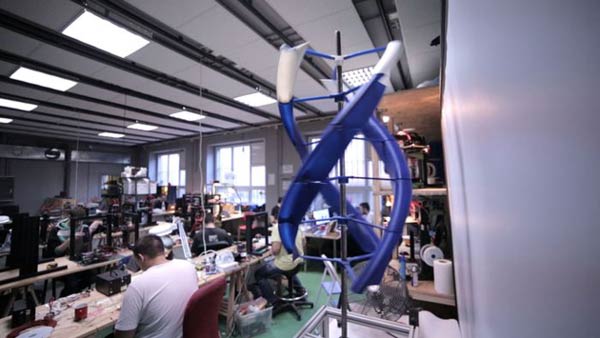The AirEnergy3D (AE3D) project aims to produce an open source 3D printed wind turbine that could produce up to 300W of power. It's developed by Polish 3D printer manufacturer Omni3D. Currently undertaking crowdfunding on Kickstarter, the team hopes to make its mobile wind turbine a reality, with part of its goal being to allow developing regions to create reliable and renewable power sources.

The open source wind turbine is quite portable and could fit into a camping backpack with no trouble. Moving and assembling the kit is easy without power tools required, we are told. Consisting of blades and a base station, the turbine is capable of producing up to 300 watts of power, enough to keep laptops, smartphones, and plenty of other gadgets running.
"From the very beginning the most important thing for us as 3D printers producer was educating people about the incredible potential of the technology. That’s why we always have special projects running inside Omni3D," said Konrad Sierzputowski, co-founder of Omni3D, reports TechCrunch. "We’ve printed a prosthetic beak for a penguin that lost it in a fight, we are organizing free and open meetings where we explain the technology to young and old etc. This time the idea was to print something that can deliver more value than the printer itself. Another reason was the need for fully open source solutions in the renewable energy market."
The first backer funded models are set to ship in February 2015. Omni3D is offering those who pledge £299 or more one of the first AE3D models off the production line. However we are told that availability is limited so you will need to be quick to grab yourself one. Of course, the open source plans mean that anyone will be able to build their own turbines with their own materials.

For every £2,500 pledged the team also promises to send one fully working AE3D to African villages where energy is very highly prized. The funding will help Omni3D finalise the design and initiate production, though Sierzputowski states that he's not entirely sure if the product will go into mass-production.
"Western countries constantly pollute our planet with waste from nuclear and traditional fossil fuel plants. We simply waste electric power and slowly kill our planet. So, let’s bring clean, renewable, and mobile energy to every doorstep around the world," he reasoned. "The Kickstarter campaign will simply make it possible for us to prepare the project and give it back to the community."
At the time of writing the AirEnergy 3D Kickstarter project has raised over half of its £19,000 goal, with 28 days to go.













